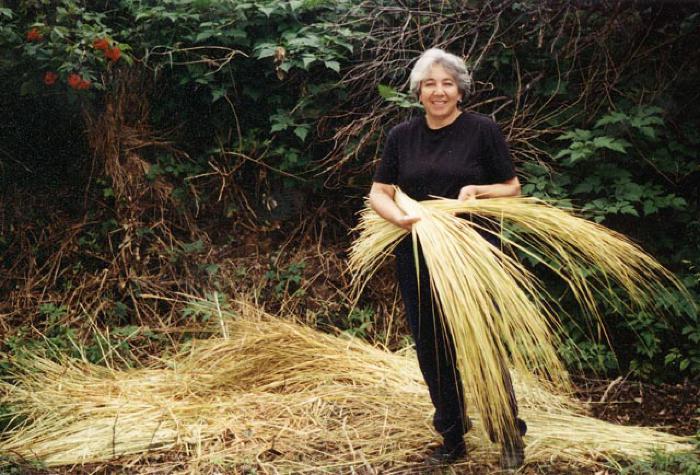Grasses — Weg’et

More than sixty-five varieties of grasses grow in the Kodiak Archipelago, as well as many types of sedges and rushes. The most widely harvested grass is beach ryegrass (Elymus arenarius), a plant common across the northern hemisphere. This tall, sturdy grass grows in open environments, particularly at the margins of saltwater beaches. It has wide, flat, coarse leaves that are known for their stiffness, particularly in comparison with other types of grasses. Beach ryegrass was traditionally gathered by both Alutiiq men and women and used both fresh and dried.
Grass was an especially important raw material in Kodiak’s treeless regions. Alutiiq people used it in building and insulating structures. Each fall grasses were cut to thatch the roofs of sod houses, provide a clean floor covering, and create fresh bedding. Grass was also used in food storage and preparation. Storage pits were lined with grass, grass provided tinder for cooking fires, and it was used as a cutting surface: a clean place to butcher fish and meat. Alutiiq people once used ryegrass to create a variety of household objects. They wove baskets, drinking cups, mittens, and socks from this grass and tied it into banya switches. Ryegrass, which can be harvested throughout Alaska, remains a popular weaving material among Native peoples.
